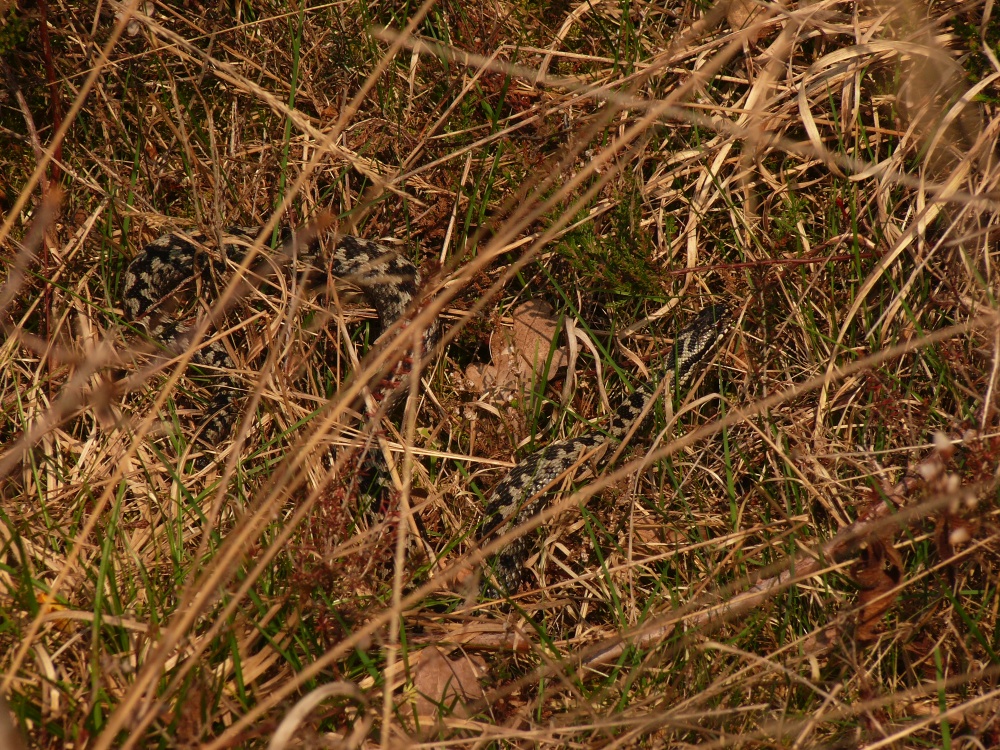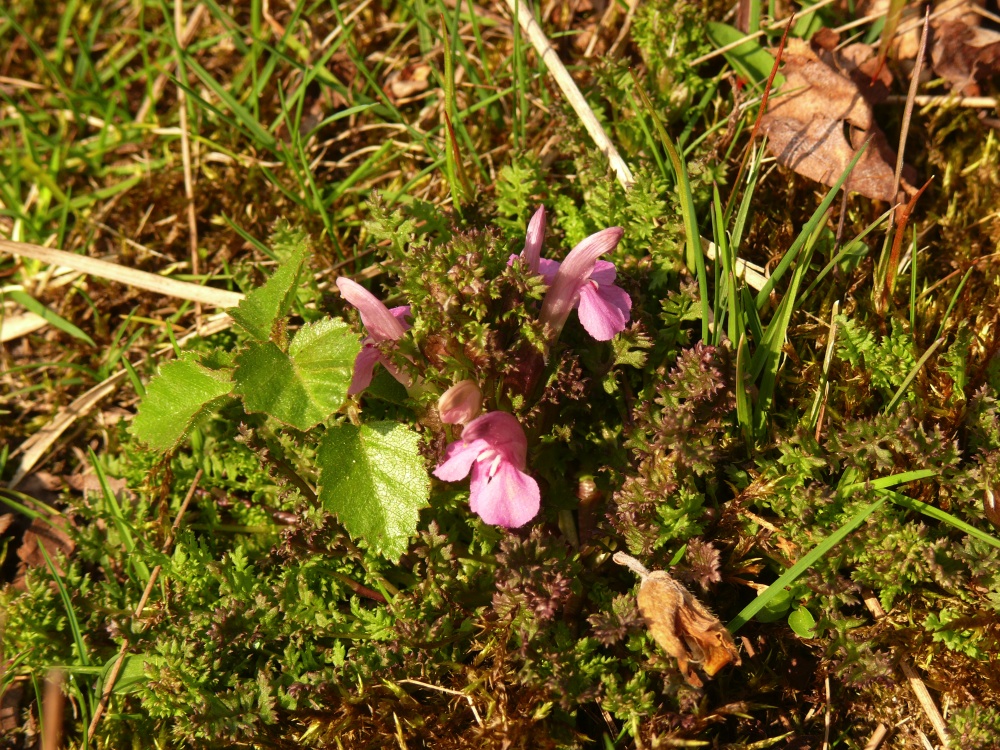
David Buckler writes:
I came across this silvery male adder (above) next to the path through the centre of the Dry Heath basking in the warm sunshine. The males tend to come out earlier than the females, for territory and mates. It is best to keep to the paths, (and dogs on a lead), in the spring, as adders tend then to be slower reacting in avoiding us. In the summer they are much more alert, and can sense us by vibration, hiding away.

Lousewort (above) is out now beside the path through the Dry Heath to the picnic site. In olden days people used to fill their bedding with this to deter fleas and lice, hence the name.

This dragonfly (above) was a surprise being out so early, looking as if it had just hatched from the larva, so was resting, and warming in the sun. They usually inhabit woodland near ponds. This species, and the Four-Spotted Chaser, (which can be seen in large numbers later, with it’s four bold black spots, whizzing around the scrapes on a hot day), have benefitted from the creation of the scrapes on the marsh, they both like newly created ponds, dragonflies being very specific in their requirements.
Picture credits: David Buckler
In case you are unfamiliar with the location of the Dry Heath, please see the Fleet Pond map in the About page above.
